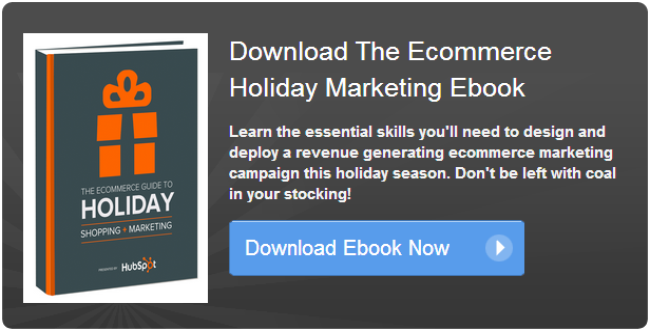 Ecommerce marketing never sleeps, and looking forward to the end of the holidays isn’t Grinchy at all. Chances are, you’ll have plenty of inventory left in stock that you’ll need to move quickly in order to prepare for the new year. The moment the holidays are over, you can begin your post-holiday sales in an effort to get those products out there. What benefits do you receive from a post-holiday sale?
Ecommerce marketing never sleeps, and looking forward to the end of the holidays isn’t Grinchy at all. Chances are, you’ll have plenty of inventory left in stock that you’ll need to move quickly in order to prepare for the new year. The moment the holidays are over, you can begin your post-holiday sales in an effort to get those products out there. What benefits do you receive from a post-holiday sale?
- Revenue
- Additional exposure
- Relationship with customers
- Inventory purge
With the possibility of these benefits, why would you stop trying to market the moment the holidays are over? There’s still plenty of money to be made.
So, what can you do to start planning your post-holiday sales? Here are a few suggestions:
1. Re-Evaluate Pre-Holiday Offers
Whatever you put in place before the holidays could negatively impact your post-Christmas sales. For instance, if you deeply discount items to get them out of your warehouse but forget to remove your free shipping offer, how much could you potentially lose?
Also, if you have a price-matching guarantee, you could see an increase in claims during post-holiday sales. These guarantees are often to undercut your competitors, but it could come back to bite you if that T-shirt you sold for $10 before Christmas is marked down to $8 after. How many times can you send out a $2 refund to make customers happy before negatively affecting your cash flow?
2. Deep Discounts for Limited Shelf-Life Items
Styles and fads come and go (anyone remember the Tickle Me Elmo craze back in the day?), and that can be bad for your ecommerce business. By deeply discounting those items that might be considered passé in the new year, you can avoid losing money on them. Even selling them at cost is better than a whole warehouse full of products you won’t be able to sell later.
This applies to technology, too. The next big thing is always around the corner, so you have to clear the way for new inventory by ringing out the old. Food items are also prime for deep discounts. Those gift baskets on your site need to find new homes so the products will still be fresh upon arrival.
3. Creative Offers
We're not really huge fans of coupons and discounts at the top of the sales funnel in general. Trying to be the cheapest seller as your main value proposition has become increasingly unsustainable as the barriers to entry for ecommerce have come ever lower. Simply, there's always someone willing to make less money than you. They can be used at specific phases of the consumer buying cycle or (in this case) to move things quickly. So in addition to deep discounts on your best-selling items, consider other offers that could boost sales. This time of year is perfect for supporting charities, so you might consider sharing part of your profits with your favorite cause. You should look into ecommerce offers and email campaigns that don't involve coupons.
For example, other offers might give away some of your products with limited shelf lives with larger purchases. For instance, with the purchase of a bottle of wine, you might include a cheese set that won’t last long after the new year. If you sell T-shirts with pop culture references, you could give one of those away with the purchase of a pair of jeans before the general public moves on to the next pop culture craze.
Another idea might be to bundle accessories to discount for larger purchases. For instance, if you’re telling technology equipment, you could include additional cords, plugs, software, apps, etc. with the purchase of phones, laptops, and tablets.
4. Segment Those Contact Lists
Why gather data throughout the year if you’re not going to use it? The post-holiday sales are the perfect time to send customized offers to select groups in your contact database. For instance, if you have records of who bought a particular phone from your website this year, you can send out your unique offers for accessories for that specific phone only to those who purchased. If your online clothing store has several items of a certain size left over, send out your offers to those who show a history of purchasing that particular size.
By doing this, you won’t need to worry about annoying your customers with irrelevant offers, for one thing. For another, you can also focus solely on those items you really need to move before new inventory comes in.
5. Start Marketing Now
Once you have your offers planned and in place, start marketing right away. Believe it or not, consumers are already looking forward to the deals they’ll score once the holidays have passed. If you let them know you’ve got goodies coming their way, they’ll start a countdown and share the news with friends.
You have plenty of time to get your PPC, social media, and email marketing plans into place. As an added bonus, many ecommerce sites are so focused on Thanksgiving and Christmas that they don’t plan for post-holiday advertising. You could get the jump on keywords, placement, and visibility just by starting your campaigns now.
With these tips, you can orchestrate a spectacular post-holiday sale without a lot of stress. What other tips might you suggest for after-Christmas sales? We’d love to hear the things that have worked for you in the past, so let us know in the comments.



